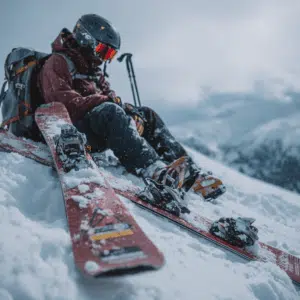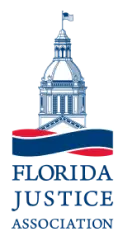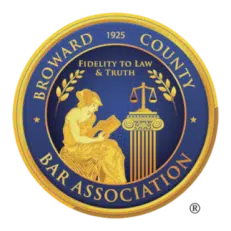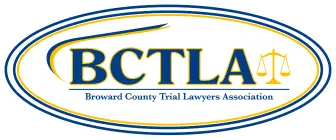
Wondering who is at fault in a ski accident? Learn about ski resort liability, uphill skier rules, collision responsibility, and what happens when accidents occur on the slopes.
When you’re carving down pristine slopes or navigating crowded ski runs, the last thing on your mind is probably who would be at fault in a ski accident. However, understanding liability in skiing incidents is crucial for every winter sports enthusiast. Whether you’re a seasoned skier or hitting the bunny slopes for the first time, knowing who is at fault in a ski accident can protect you legally and financially while helping you ski more responsibly.
Ski accidents happen more frequently than many people realize, with thousands of incidents occurring at ski resorts across the country each year. From minor collisions to serious injuries, these accidents raise important questions about responsibility, negligence, and legal liability. The determination of fault in skiing accidents isn’t always straightforward and depends on various factors, including skiing rules, resort conditions, and individual behavior.
Understanding Basic Ski Accident Liability
The question of fault in ski accidents involves several key parties who might bear responsibility. Unlike car accidents, where fault determination follows well-established traffic laws, ski accident liability operates under a unique set of principles that blend recreational activity assumptions with standard negligence law.
Primary parties that may be liable include:
- Individual skiers and snowboarders
- Ski resort operators and management
- Equipment manufacturers
- Ski instructors and guides
- Mountain maintenance crews
The legal framework surrounding ski accidents recognizes that winter sports carry inherent risks. Most states have enacted “ski safety acts” or similar legislation that provides some protection to ski resorts while establishing basic responsibilities for all mountain users. These laws typically require skiers to understand and accept certain risks while still holding resorts accountable for maintaining safe conditions.
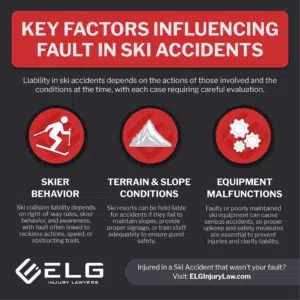 Who Is Liable in a Ski Accident?
Who Is Liable in a Ski Accident?
Determining liability in a ski accident requires examining the specific circumstances surrounding the incident. Courts and insurance companies evaluate several factors when assessing who bears responsibility for injuries and damages.
Skier and Snowboarder Responsibility: Every person on the mountain has a duty to ski within their ability level and maintain control at all times. This fundamental principle means that skiers who lose control, ski recklessly, or fail to follow basic mountain safety rules may be held liable for accidents they cause. The skiing community operates under an informal code of conduct that becomes legally significant when accidents occur.
Resort Liability: Ski resorts aren’t automatically immune from liability despite the inherent risks of skiing. Resort operators must maintain safe conditions, properly mark hazards, and ensure their lifts and equipment function correctly. When resorts fail in these duties, they may be held responsible for resulting accidents. However, resorts are generally not liable for injuries resulting from obvious and inherent skiing risks like falls on groomed runs or collisions between skiers following the rules.
Third-Party Liability: Sometimes, parties other than skiers and resorts may bear responsibility. Equipment manufacturers can be liable if faulty gear contributes to an accident. Ski instructors may be responsible if they fail to provide proper guidance or place students in dangerous situations beyond their skill level.
Who Is at Fault When Skiers Collide?
Skier collisions represent one of the most common types of ski accidents, and determining fault requires understanding the established “rules of the road” for mountain sports. These unofficial but widely recognized guidelines help courts and insurance companies assign responsibility when skiers crash into each other.
The Downhill Skier Rule: Generally, the downhill skier has the right of way. This means that uphill skiers must avoid colliding with anyone below them on the slope. The downhill skier is considered to have established their line and should be able to continue their descent without interference from behind.
Overtaking Responsibilities: When passing another skier, the overtaking skier (usually coming from uphill) bears full responsibility for completing the pass safely. This includes ensuring adequate space, accounting for the downhill skier’s potential movements, and avoiding any contact during the maneuver.
Collision Scenarios and Fault Assessment:
- Rear-end collisions: Almost always the fault of the uphill skier
- Side-by-side collisions: Require analysis of each skier’s path and actions
- Intersection accidents: Depend on right-of-way rules and visibility factors
- Lift line incidents: Often involve shared responsibility based on crowding and behavior
The key factor in collision cases is whether each skier was acting reasonably, given the conditions and their skill level. Courts examine factors like visibility, slope conditions, crowding, and whether either party was skiing erratically or beyond their abilities.
Let's Settle For More... Get Your FREE Case Review Today.
Let's Settle For More... Get Your FREE Case Review Today.
s the Uphill Skier Always at Fault?
While the uphill skier bears responsibility in many ski accidents, they’re not automatically at fault in every situation. This common misconception can lead to unfair assumptions about liability and responsibility on the slopes.
Exceptions to Uphill Skier Liability:
Erratic Behavior by Downhill Skier: If the downhill skier makes sudden, unpredictable movements that couldn’t reasonably be anticipated, the uphill skier may not be at fault. This includes situations where someone stops suddenly in the middle of a run without warning or makes dramatic direction changes without looking uphill.
Equipment Failures: When equipment malfunctions cause a collision, the uphill skier may not bear responsibility. Broken bindings, ski edge catches, or other mechanical failures can absolve the uphill skier of fault, particularly if they were skiing responsibly before the equipment failure.
Resort Condition Issues: Poor mountain conditions that contribute to loss of control may shift liability away from individual skiers. Ice patches, poorly marked obstacles, or inadequate grooming can make the resort partially or fully responsible for resulting collisions.
Shared Fault Scenarios: Many ski accidents involve shared responsibility. For example, if an uphill skier is following too closely but the downhill skier suddenly stops in a blind spot, both parties may bear some responsibility for the resulting collision.
The legal principle of comparative negligence applies in many ski accident cases, meaning fault can be divided between multiple parties based on their respective contributions to the accident.
What Happens If We Accidentally Hit Someone While Skiing?
Accidentally hitting another skier can be a traumatic experience, but knowing the proper steps to take can protect everyone involved and ensure appropriate help is provided.
Immediate Response Steps:
Check for Injuries: Your first priority should always be ensuring everyone involved receives appropriate medical attention. Don’t attempt to move seriously injured skiers, but do call ski patrol immediately if needed.
Exchange Information: Like any accident, you should exchange contact and insurance information with the other party. Get names, phone numbers, insurance carriers, and lift ticket numbers if possible.
Document the Scene: Take photos of the accident location, equipment involved, and any relevant conditions. Note the time, weather conditions, slope difficulty, and any witnesses present.
Report to Ski Patrol: Many resorts require accident reports for insurance purposes. Ski patrol can also provide objective documentation of the incident and conditions.
Legal and Insurance Considerations:
Liability Insurance: Your homeowner’s or renter’s insurance may cover ski accident liability, but coverage varies significantly between policies. Some insurers exclude coverage for certain recreational activities, while others provide comprehensive protection.
Legal Representation: For serious accidents involving significant injuries, consulting with an attorney experienced in recreational liability can help protect your interests. Ski accident cases often involve complex questions of assumption of risk and comparative negligence.
Settlement vs. Litigation: Many ski accidents are resolved through insurance claims rather than formal lawsuits. However, cases involving serious injuries, disputed fault, or inadequate insurance coverage may require litigation.
| Who Is at Fault in a Ski Accident? — ELG Injury Lawyers | |
|---|---|
| Key Takeaways | Liability depends on negligence and the facts: skier behavior, terrain/slope conditions, and equipment issues. Fault can be shared (comparative fault). Resorts must maintain safe conditions; skiers must follow responsibility codes and ski within their abilities. |
| Factors That Influence Fault |
|
| Common Liability Scenarios |
|
| Skier Responsibilities & Codes | Resorts enforce a Skier Responsibility Code (stay in control, yield appropriately, obey signs, no skiing under the influence). Some states treat reckless skiing similar to reckless driving in terms of legal consequences. |
| Waivers & Assumption of Risk | Liability waivers often limit claims for inherent risks of skiing but generally don’t excuse a resort’s negligence. Waiver language matters, but unsafe conditions or negligent acts can still lead to liability. |
| What To Do After a Ski Accident | Seek medical care; document the scene and hazards; collect witness statements and photos; preserve equipment; and consider contacting a ski accident lawyer to protect your claim. |
| Potential Compensation | Medical bills, lost wages, pain and suffering, and other losses. Many cases resolve through negotiation with insurers; evidence and expert support improve outcomes. |
| How ELG Can Help | Experienced attorneys investigate causes (behavior, conditions, equipment), apply comparative-fault rules, negotiate with insurers, and pursue fair settlements. Free case reviews and contingency-fee representation available. |
| ELG Injury Lawyers • “Let’s Settle For More.” • Free Case Review: 561-338-0420 | |
Resort Responsibility and Mountain Safety
Ski resorts play a crucial role in accident prevention and may bear liability when they fail to meet their safety obligations. Understanding resort responsibilities helps skiers recognize when accidents might involve resort negligence rather than just inherent skiing risks.
Resort Safety Duties:
- Maintaining lifts and mechanical equipment in safe working condition
- Properly grooming runs and marking hazards
- Providing adequate signage for run difficulty and conditions
- Training staff appropriately for safety and emergency response
- Implementing reasonable safety policies and enforcing mountain rules
Common Resort Liability Scenarios:
- Lift malfunctions causing falls or collisions
- Inadequate hazard marking leading to impacts with obstacles
- Poor grooming creating dangerous ice or snow conditions
- Insufficient patrol coverage in high-risk areas
- Equipment rental issues involving improperly maintained gear
Prevention and Risk Reduction
Understanding fault determination in ski accidents should ultimately serve the goal of accident prevention. By recognizing common causes of skiing incidents and following established safety practices, mountain users can significantly reduce their risk of both causing and being involved in accidents.
Key Prevention Strategies:
- Always maintain control and ski within your ability level
- Follow the skier responsibility code established by ski areas
- Stay alert for changing conditions and other mountain users
- Use proper equipment and ensure it’s correctly adjusted
- Take lessons to improve technique and safety awareness
- Avoid skiing alone, especially in challenging conditions
The mountain environment demands respect and constant attention to safety. While accidents can still occur despite best efforts, understanding liability principles and following safety guidelines creates a better experience for everyone on the slopes.
Whether you’re seeking to understand your rights after an accident or simply want to be a more responsible mountain user, knowing who is at fault in a ski accident helps you navigate both the legal landscape and the snow-covered slopes with greater confidence and awareness.
Frequently Asked Questions
What factors determine liability in a ski accident?
Liability in a ski accident is primarily determined by evaluating negligence, skier behavior, terrain conditions, equipment malfunctions, and adherence to safety regulations. Understanding these factors is essential for establishing responsibility in such incidents.
Are ski resorts always liable for accidents on their slopes?
Ski resorts are not always liable for accidents; they can be held accountable for negligence, like poor maintenance, but skiers also share responsibility by following safety guidelines.
How does a liability waiver affect my ability to file a personal injury claim?
A liability waiver may limit your ability to claim for inherent risks, but does not protect against negligence. Therefore, if negligence is present, you may still file a personal injury claim despite the waiver.
What should I do immediately after a ski accident?
After a ski accident, it is crucial to seek medical help immediately, document the scene, gather witness statements, and consider contacting a personal injury attorney for legal guidance. These steps will help ensure your well-being and protect your rights.
How can an experienced personal injury attorney help me after a ski accident?
An experienced personal injury attorney can effectively investigate the ski accident, gather crucial evidence, negotiate with insurance companies, and advocate for your rights, thereby enhancing your chances of securing fair compensation.
Related Article(s)
Skiing Accident Claims: Your Legal Rights Explained
Last updated Friday, September 26th, 2025
